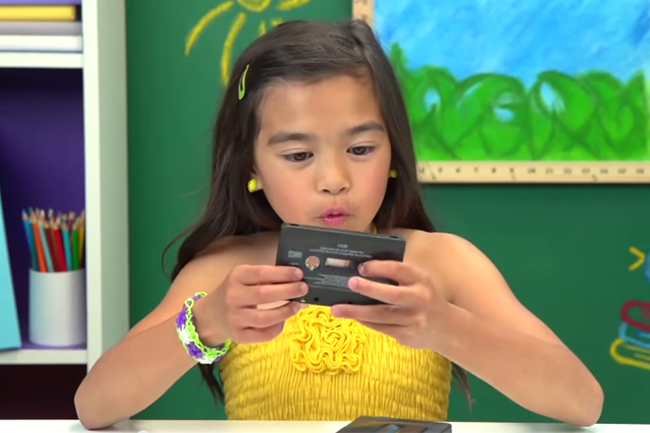
Way back in 1979, music and portability changed forever when Sony released the iconic Walkman, a AA battery-powered monstrosity weighing almost a pound that could play your favorite cassette or mixtape. It came complete with ridiculously uncomfortable metal and foam headphones, but it was as important an evolution in the progression of portable music just like the CD Player and the iPod.
Now here’s what it looks like when children between ages 7 and 13 react to one:
You’ve got to be kidding me!” exclaimed one eight-year-old after being told that the massive plastic gadget in his hand was once used to play cassettes. Another’s look of excitement quickly dropped to disappointment after the black, bulky plastic device they were being handed was not a cellphone, but actually a music cassette player.
For many of the children, it took a few minutes of tinkering to figure out just how the device works. In an era where almost everything is connected or operated with the help of a wireless signal and internal memory, we don’t see the inner workings of our gadgets all that much anymore. The Walkman is certainly a far cry from an iPhone, having no sort of display aside from a small window to see if your cassette is moving. Remember: all the children in the video were born after the first iPod was release back in 2001.
This video is a fun reminder of how quickly technology can evolve. The Walkman of the 1980s looks like something that belongs in a museum to most children. However the reality is that even gadgets from just a decade or so ago already feel ancient. Some of the most important aspects of our gadgets – from multi-touch displays to high-capacity flash memory and even cellular service – have only been around for a few years. In a decade, who knows how crazy people will think of our own smartphones and all-touch displays.
We can’t wait to boot up a holo video of children figuring out an iPhone 5S 35 years from now.


